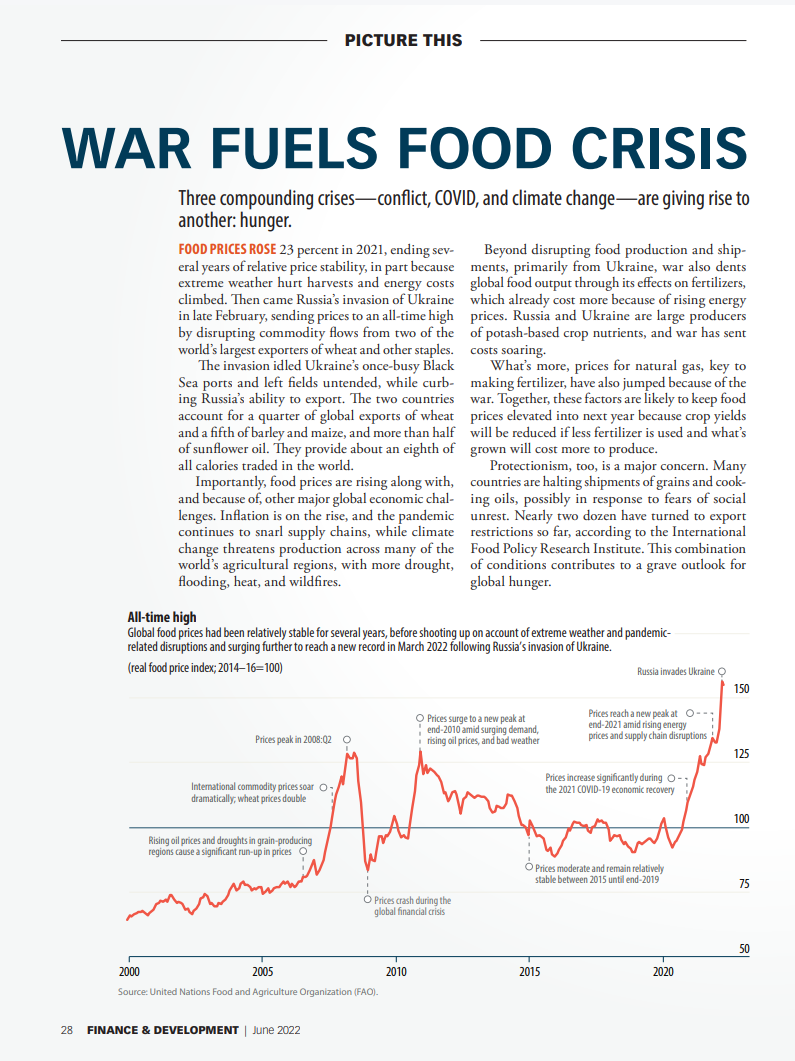"Three compounding crises—conflict, COVID, and climate change—are giving rise to another: hunger.
Food prices rose 23 percent in 2021, ending several years of relative price stability, in part because extreme weather hurt harvests and energy costs climbed. Then came Russia’s invasion of Ukraine in late February, sending prices to an all-time high by disrupting commodity flows from two of the world’s largest exporters of wheat and other staples.
The invasion idled Ukraine’s once-busy Black Sea ports and left fields untended, while curbing Russia’s ability to export. The two countries account for a quarter of global exports of wheat and a fifth of barley and maize, and more than half of sunflower oil. They provide about an eighth of all calories traded in the world.
Importantly, food prices are rising along with, and because of, other major global economic challenges. Inflation is on the rise, and the pandemic continues to snarl supply chains, while climate change threatens production across many of the world’s agricultural regions, with more drought, flooding, heat, and wildfires."
This article was prepared and published in the IMF's Finance & Development magazine in English language. Click here to access the article.
Source: ANDREW STANLEY, FINANCE&DEVELOPMENT, JUNE 2022 ISSUE
Illustration: FINANCE&DEVELOPMENT



